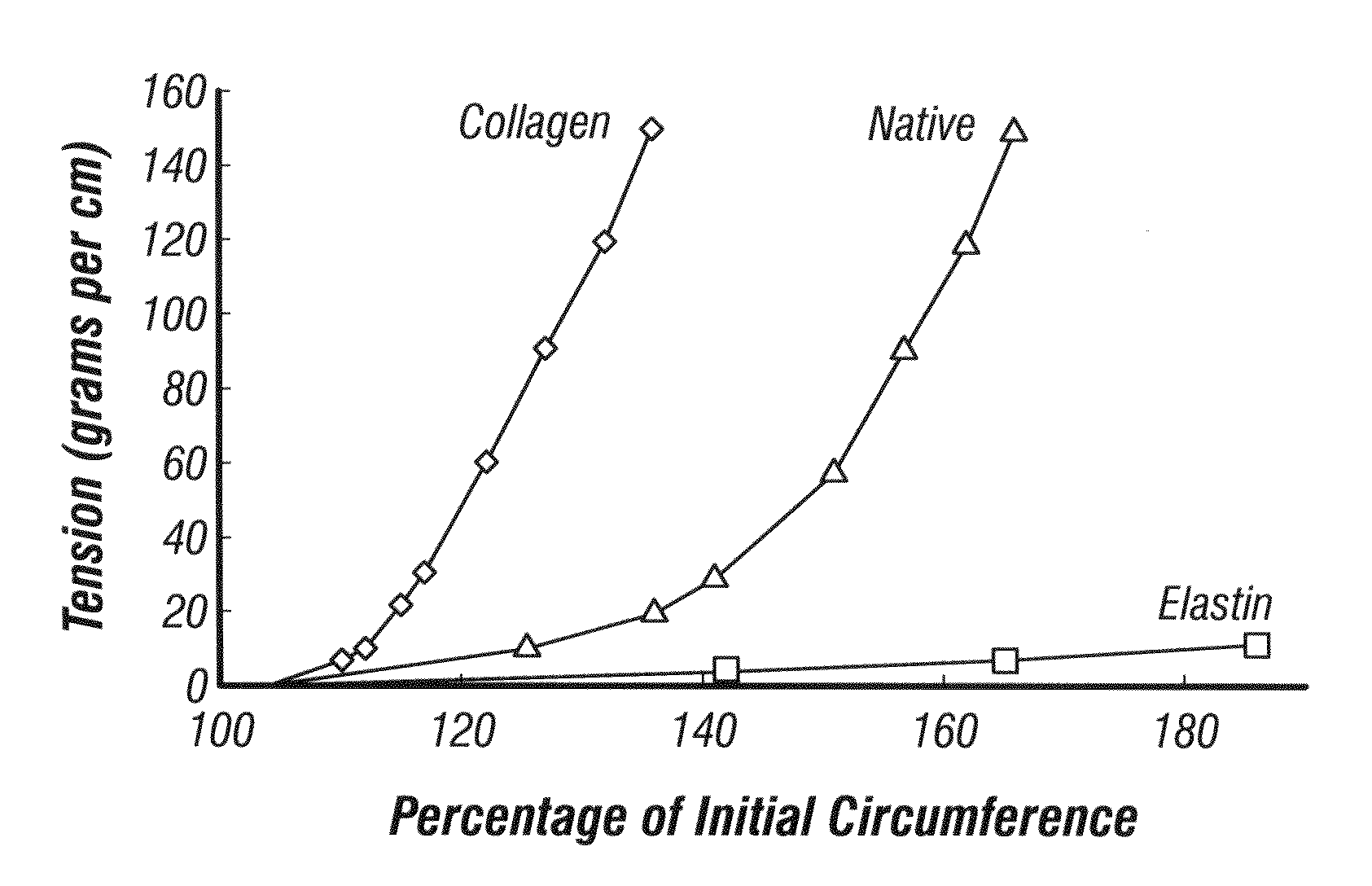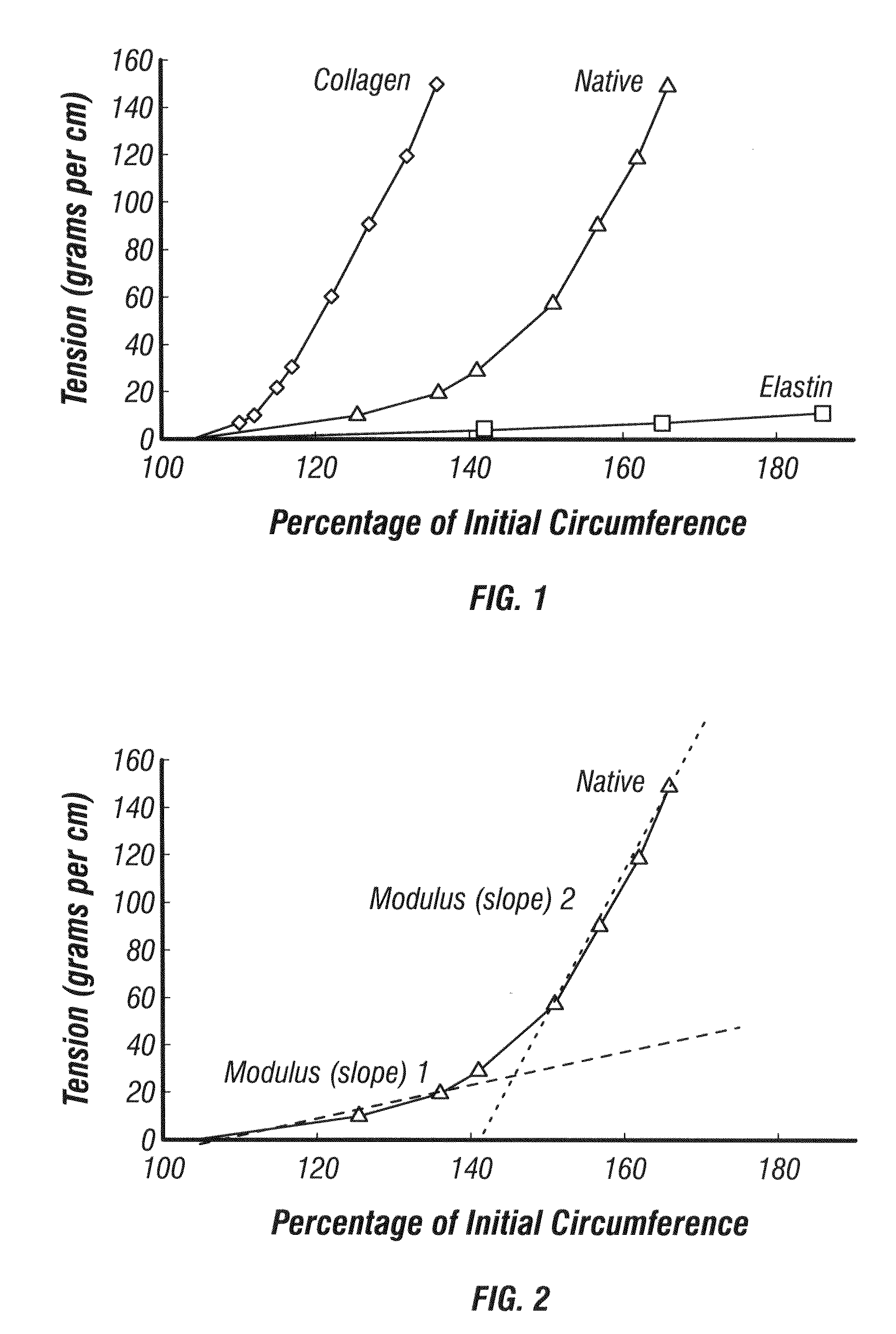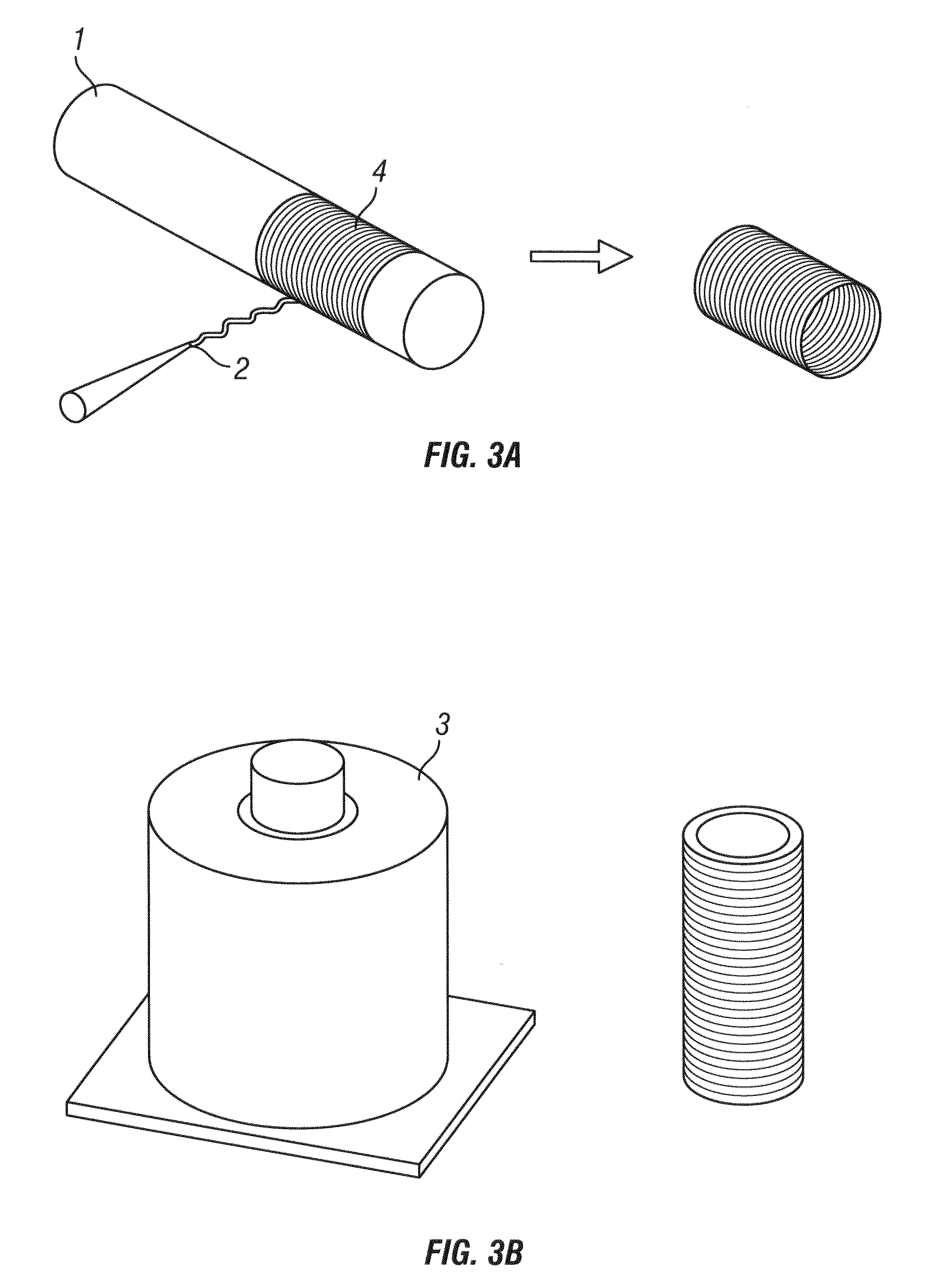Tissue engineering scaffolds
- Summary
- Abstract
- Description
- Claims
- Application Information
AI Technical Summary
Benefits of technology
Problems solved by technology
Method used
Image
Examples
example 1
Suture Wrap Over Latex Tubing
[0177]Generation of a “J”-shaped mechanical response in a two-component tubular architecture.
[0178]There are several ways in which the generation of a “J”-shaped mechanical behavior in a two-component system is possible. The results from the combination of an elastic inner layer coupled to a stiff outer layer (tensile element) are presented below. In this case, the inner layer is latex and the outer layer is suture, either wrapped polydioxannone (PDO), or stitched VICRYL™ (90:10 PLGA). FIG. 14A-B shows a scaffold made from VICRYL™ sutured around the outer circumference of a latex tube. Suture was applied while the latex tube was expanded to a larger diameter. The latex tube was photographed at its resting diameter which is why the suture, applied at a larger diameter is forming loops around the circumference of the latex tube. Scale bar is 0.5 cm. A) axial view B) lateral view.
[0179]Methods
[0180]Thin-walled latex tubing (Primeline Industries) with an inn...
example 2
[0188]A combination of an elastic inner layer coupled to a stiff outer layer (tensile element) was also examined. The inner layer is electrospun polyurethane (PU) and the outer layer is electrospun Poly glycolic acid (PGA).
[0189]Methods
[0190]10% PU in 1,1,1,3,3,3-Hexafluoro-2-propanol (HFIP) and 10% PGA in HFIP were the base solutions used in electrospinning. Approximately 2 milliliters of 10% PU was electrospun onto a 5 mm OD mandrel utilizing standard electrospinning procedures. Following completion, the PU tube was rolled off of the 5 mm OD mandrel and rolled onto an 8 mm OD mandrel. Use of a 5 mm OD and 8 mm OD mandrel equates to a 60% increase in circumferential length.
[0191]10% PGA was then electrospun onto the surface of the dilated PU tube until fully coated which equated to an overall volume of approximately 1 ml of the PGA solution. Following coating, the hybrid tube was removed while care was taken to minimize delamination.
[0192]Subsamples were taken from pure PU and PGA ...
example 3
Scaffold Formation Using an Expanding Mandrel
[0197]Here, we describe a novel method that successfully recapitulates the complex stress / strain behavior of native vessels through a multi-component architectural modification. In addition, the method presents opportunities for the “tuning” of these complex biomechanical properties through a combination of material selection and variations in the formation processes. Tubular scaffolds made with Tecothane 1074 or Poly(L-lactide-co-ε-caprolactone, and Polyglycolic acid knitted mesh tubing generated native vessel characteristic stress / strain behavior with moduli of 0.5 MPa-3.97 MPa and burst pressures averaging 1676 mm-Hg.
[0198]10% Polyurethane (PU: Tecothane 1074, Lubrizol, Inc.) and 12% Poly(L-lactide-co-ε-caprolactone) (PLCL: Lakeshore Biomaterials) were maintained as stock solutions in 1,1,1,3,3,3-Hexafluoro-2-propanol (HFIP: Sigma). 12 cm length tubes of these materials (4 mm-6 mm internal diameter, ˜4-5 ml of stock solution) were form...
PUM
| Property | Measurement | Unit |
|---|---|---|
| Length | aaaaa | aaaaa |
| Length | aaaaa | aaaaa |
| Pressure | aaaaa | aaaaa |
Abstract
Description
Claims
Application Information
 Login to View More
Login to View More - R&D
- Intellectual Property
- Life Sciences
- Materials
- Tech Scout
- Unparalleled Data Quality
- Higher Quality Content
- 60% Fewer Hallucinations
Browse by: Latest US Patents, China's latest patents, Technical Efficacy Thesaurus, Application Domain, Technology Topic, Popular Technical Reports.
© 2025 PatSnap. All rights reserved.Legal|Privacy policy|Modern Slavery Act Transparency Statement|Sitemap|About US| Contact US: help@patsnap.com



